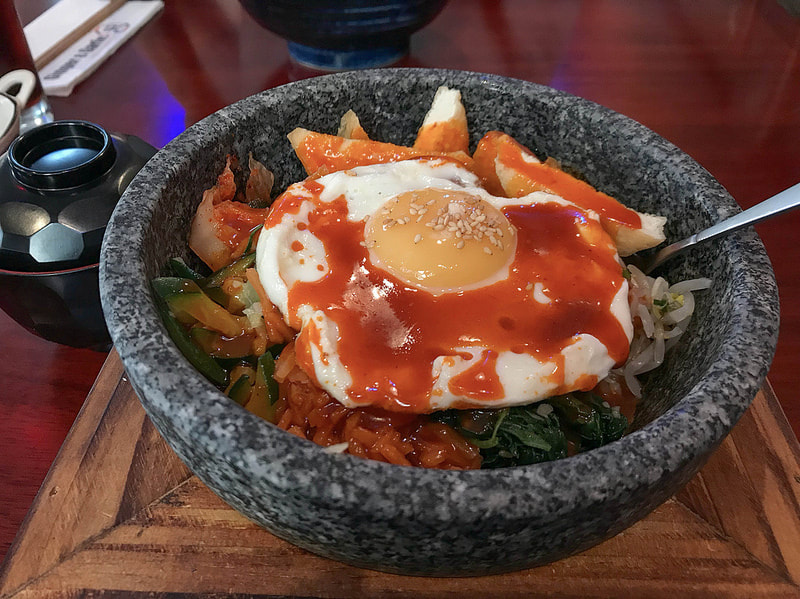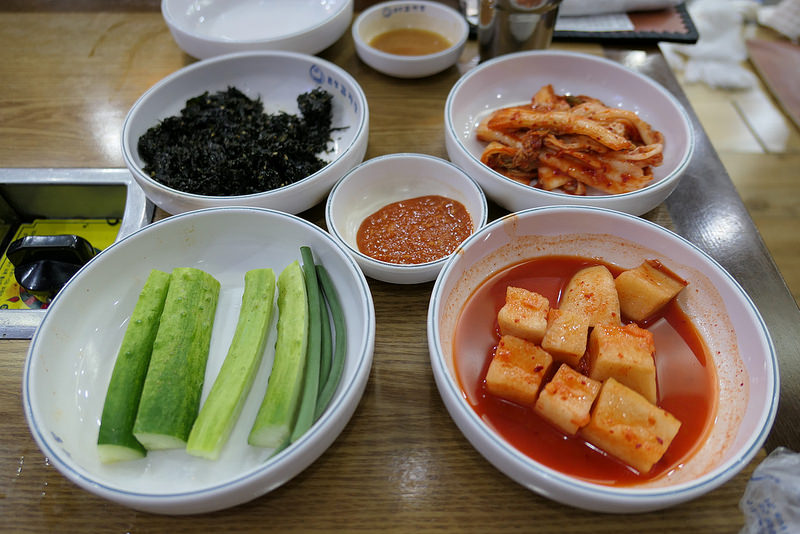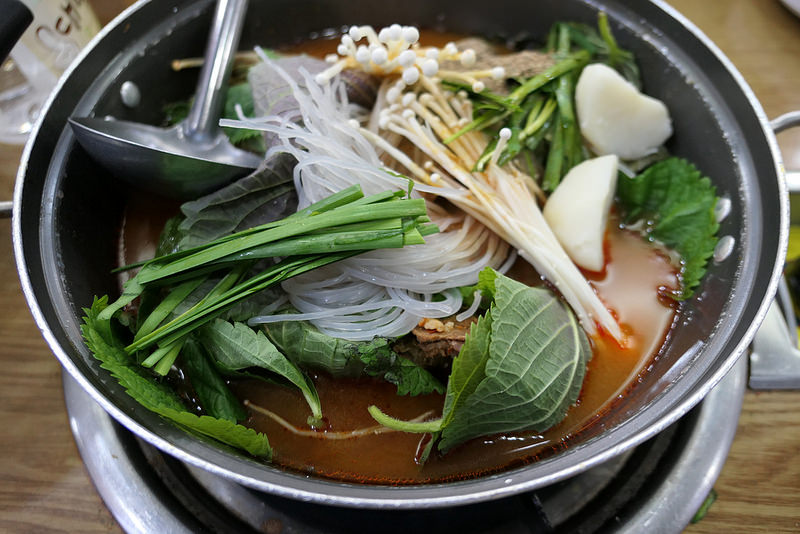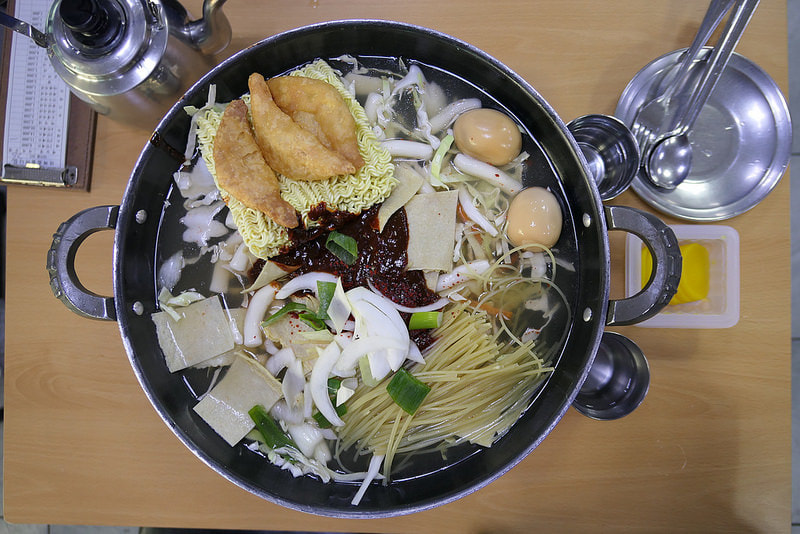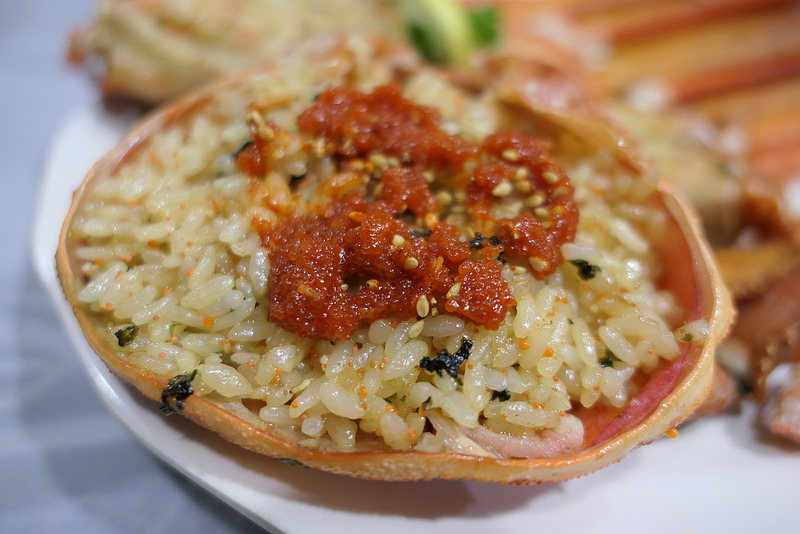Jazz and Korean Bibimbap (or Bibimbab)
a reflection by Jea Sophia Oh (West Chester University, USA)
|
|
A central idea in this website is hybridity: the blending of identities
into a creative process. I would like to introduce one of the popular Korean dishes, bibimbab, which embodies this creativity. ‘Bibim’ means ‘mixed’ and ‘bab’ means ‘rice,’ so ‘bibimbab’ literally means ‘mixed meal.’ A typical Korean meal (bab-sang: meal table) has a bowl of rice, kimchee, soup, and other delicious side dishes such as grilled dishes, steamed dishes, marinated grills, and vegetable dishes. Bibimbab is a convenient meal that brings all side dishes and rice together in one bowl. Bibimbab is served as a bowl of warm rice topped with sautéed vegetables and chili pepper paste. Add a fried egg and sliced marinated beef (or mushrooms for vegetarians). All different colors of vegetable toppings are often placed so that adjacent colors complement each other to bring visual effects like a beautiful rainbow circle. Bibimbab has to be mixed really well so that the chili paste will bring out the flavors of the dish. Bibimbab is not only visually beautiful, but also so delicious and nutritive as well as convenient to serve. Because of its convenience of preparation, since the late 20th century bibimbab has been served as an airline meal on various airlines connecting to South Korea. Bibimbab was first mentioned in the Sieuijeonseo, an anonymous cookbook in the late 19th century. There are many stories about the origin of bibimbab. One of the stories is related in Korean people’s decolonizing movement against the first Japanese invasion (Imjin War, 1592-1593). In order to supply meals to Korean soldiers in the war situation, the Korean women helpers put all the vegetables and meat with rice in a bowl. Another story is an agricultural purpose. At harvest seasons, when farmers worked at the field, women had to deliver lunch for them. Because it was hard to deliver all dishes, they put all the side dishes together in one bowl on top of rice. One other story is a clever idea to save foods after Korean holidays such as Chuseok (Korean Harvest Moon Day) and Seolnal (Korean New Year Day). After a festival, usually foods remain left without being touched. Bibibab was made in order not to waste the foods. I have learned from my parents that “One will be cursed, if she/he throws (wastes) foods away.” I am certain that almost every Korean household teaches children in the same way. Though the exact origin of bibimbab is uncertain, it is certain that a bowl of bibimbam was made of such spiritual ingredients, wisdom, love, cooperation, and decolonizing and recycling spirit. When I come back home from a long day of teaching, I often feed myself with bibimbab. I taste the harmony and diversities simultaneously. Not only do I feel the hybrid flavor of the mixed bibimbab, but also I chew each ingredient and grain and feel its unique flavor in the process of hybridization. This process of harmonization and hybridization is like a jazz concert. This is how I listen to jazz. I listen to each instrument in the mixture of melodies and rhythms of all together: I focus my ears on one instrument and move my focus to another (like first, piano, and then, the base, and then the saxophone, and then the drum and other instruments), so I feel the diversity and hybridity together in the beautiful harmony without eliminating any. In the spirit of jazz, then, there is no strict recipe to cook bibimbab. “If you have a spirit of recycling and wisdom to utilize the foods in your refrigerator, go ahead and cook rice, and mix, mix, mix, with side dishes.” You can create a hybrid bowl of bibimbab as your own. The flavors could be different according to what you have which may tell your stories, your own microcosmic rainbow. That is the aesthetics of food hybridity of bibimbab. The Youtube video was made by a Korean who introduces her own way of making bibimbab; each person has his or her own way. That's the jazzic approach. |
